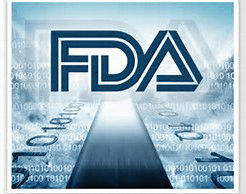 Navigating FDA Reporting Requirements
Navigating FDA Reporting Requirements
In an era where regulatory compliance forms the backbone of the pharmaceutical industry, understanding and adhering to the FDA’s reporting requirements is not just a necessity—it’s a strategic imperative. At Compliance Insight, we’ve spent years guiding companies through the maze of regulatory and quality compliance. Our experience has shown us that while the journey is complex, with the right knowledge and approach, navigating it successfully is entirely possible. This article demystifies the FDA’s guidance issued under section 510(j)(3) of the FD&C Act, aimed at registrants of drug establishments regarding the reporting of drugs manufactured or processed for commercial distribution.
Background and Legislative Framework
The foundation of our discussion is the obligation for domestic and foreign drug establishment registrants to register with the FDA. This includes listing all drugs manufactured for commercial distribution, a mandate that has been underscored by the enactment of the CARES Act on March 27, 2020. The Act not only aims to combat the impacts of COVID-19 but also enhances the FDA’s ability to assess and mitigate drug shortages, marking a significant step in ensuring the resilience of the drug supply chain in the United States.
Who Must Report
The guidance outlines that manufacturers, contract manufacturers, repackers, and relabelers engaged in the production of listed drugs for commercial distribution fall under the reporting obligations. In my early days as a consultant, I encountered a client who was uncertain whether their contract manufacturing operations triggered these reporting requirements. Through careful review of the guidance, we clarified their obligations, highlighting the importance of understanding the scope of entities affected by these regulations.
Detailed Reporting Obligations
What to Report
The FDA requires a comprehensive report encompassing human and animal drug products, medical gases, homeopathic products, and over-the-counter monograph drugs. This broad spectrum ensures a holistic view of the drug supply chain, facilitating effective surveillance and risk management by the FDA.
Timing and Submission Process
Reports must be submitted annually, detailing the amount of each listed drug manufactured for commercial distribution. Submission through the NextGen Portal is mandated, emphasizing the need for precision and timeliness. A client once shared their apprehension about the digital submission process. We assisted them in navigating the NextGen Portal, transforming their apprehension into confidence in their ability to meet FDA requirements.
Legal Enforceability and Confidentiality
It’s crucial to understand that while FDA guidance documents are not legally enforceable, they serve as recommendations that industry members are expected to follow. Additionally, the information submitted under section 510(j)(3) is generally considered confidential commercial information, safeguarded from disclosure under FDA regulations.
Supply Chain Insights and FDA Surveillance
The data reported provides invaluable insights into the drug supply chain, aiding the FDA in identifying vulnerabilities and implementing targeted actions to strengthen it. From our perspective at Compliance Insight, the ability to contribute to such a critical aspect of public health safety is a privilege. We’ve supported clients in accurately reporting data, ensuring their contributions to supply chain resilience are recognized and impactful.
Challenges and Recommendations for Enhanced Reporting
The FDA faces challenges in accessing detailed information for drug facility surveillance, primarily due to the aggregate nature of data from approved applications. The guidance recommends that data from all applicable registrants arrive at the Agency during the same timeframe, covering the previous calendar year. This unified approach allows for a comprehensive assessment of the drug supply chain, facilitating more informed decisions by the FDA.
Reporting for Specific Drug Categories
The guidance goes into detail regarding the reporting for various drug categories, including those in finished package form and those not in finished dosage form. For instance, reporting for medical gases does not require the determination of the vented amount during normal operations, a nuance that could be overlooked without careful attention to the guidance.
Best Practices for Compliance
At Compliance Insight, we emphasize the importance of establishing robust reporting processes. This includes utilizing authorized agents where necessary and ensuring that reports are submitted accurately and on time. A key practice is the drafting of quality agreements or contracts with contract facilities, detailing reporting arrangements to enhance compliance.
Conclusion
The FDA’s reporting requirements under section 510(j)(3) of the FD&C Act represent a crucial component of the regulatory landscape for drug manufacturers. At Compliance Insight, we understand the challenges and intricacies of complying with these regulations. Our expertise and experience have equipped us to guide companies through their compliance journey, ensuring they meet their obligations while contributing to the safety and resilience of the drug supply chain.
If you’re navigating the complexities of FDA reporting requirements, you’re not alone. Compliance Insight is here to help. Our team of experts can provide the guidance and support you need to ensure compliance and foster a stronger, more secure drug supply chain. Contact us today to learn how we can assist you in meeting your regulatory obligations.
